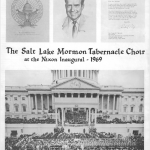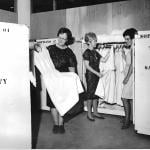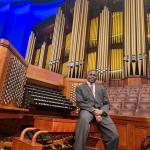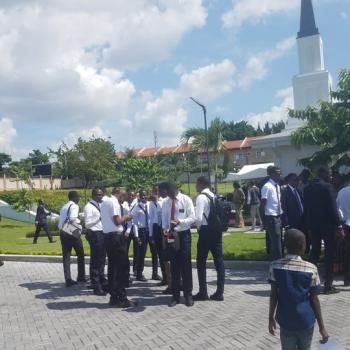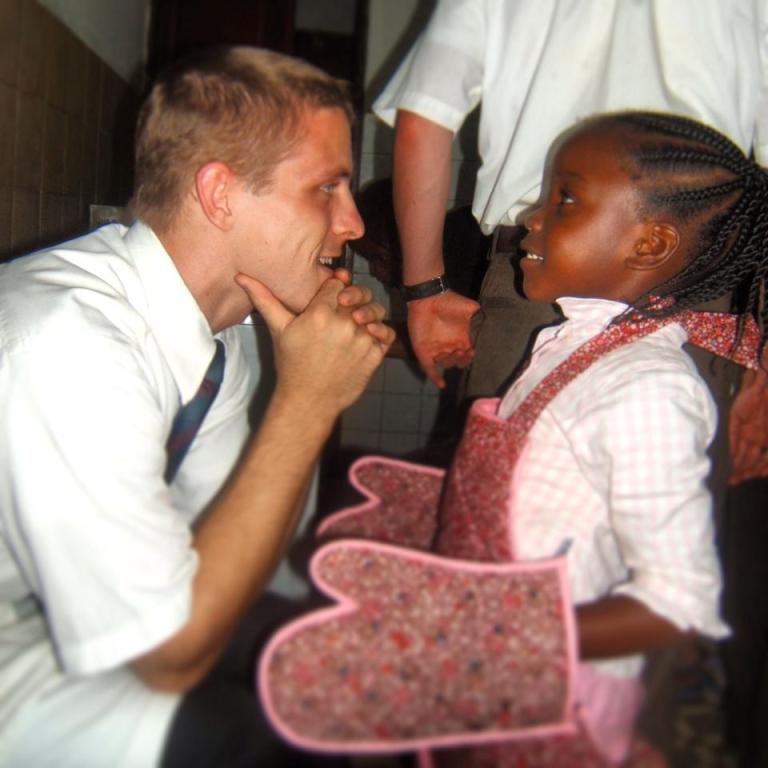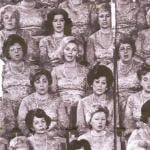
We know it as “The Mormon Tabernacle Choir,” and have listened to its Sunday broadcasts forever–or so it seems. The choir is now called “The Tabernacle Choir at Temple Square.” The president of the Church of Jesus Christ of Latter-day Saints, Russell Nelson, has urged members to stop using the nickname “Mormon,” so the choir has been re-branded.
On August 22, 1847–just a month after the first company of pioneers set foot in Utah–the Mormon Tabernacle Choir was formed.
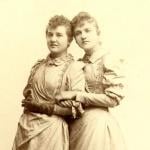
In time, it became the church’s “musical ambassador.”
In 1981, Ronald Reagan, moved to tears by its rendition of “Battle Hymn of the Republic” called it “America’s choir.” (That rendition won a Gammy award.)
Indeed, the choir has performed at inaugurations for Lyndon B. Johnson (1965), Richard Nixon (1969 and 1973), Ronald Reagan (1981), George H.W. Bush (1989), George W. Bush (2001), and Donald Trump (2017).
Some have considered the choir to be politically conservative, though the inaugural performances have not been without controversy. Choir member Pam Chamberlin resigned in protest of the Donald Trump inauguration in 2017.
Political neutrality is a choir standard, though. Choir member Jim Bennett, not a Trump supporter, said this about the controversy: “The peaceful transfer of power is a bigger deal than any president, and inaugurations are not partisan affairs.”There have been other political issues, of course. For years, the choir was considered “all white.” Before the disavowal of some racist ideas and practices in the LDS Church, there were very few Black choir members.
In 1970, Wynetta Martin became the first Black person invited into the choir. It was a year of unrest and protest, as the Civil Rights Movement was spreading across the nation and the world. Wynetta Martin described her experience thus:
Since I have occupied a seat as a member of the Mormon Tabernacle Choir, many exciting things have
happened. The first night of Choir practice I had papers to sign and was taken on a tour of the Tabernacle. I
remember one person approached me and said, “Sister Martin, we are very happy to have you with us. What
shall I call you — Black, Negro, or colored?”
I have traveled with the Choir for two years now. We usually travel by air. It takes about two airplanes
to seat 375 people not including the authorities and TV men. There is so much to look forward to on the tours. We
have pillow fights, we sing, and we take the time to get acquainted with others in the Choir.
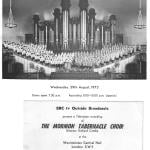
Speaking personally, I have long believed that the LDS Church is uniquely positioned to set a precedent for fighting racism–precisely because of its history. If we leap from 1970 to 2025, we would hope to see many more people of color in the seats. We still don’t see a big number, but the number has markedly increased . Other important things have happened as well, such as methods of translation which allow the choir to sing in sixteen different languages. Consider these events:
1994: Jesper Hairston, a renowned expert in spirituals conducts the choir in “Amen” and says, “White folks don’t have the rhythm. You know about the music, but you don’t know rhythm.”
2006: Under the direction of Craig Jessop, the choir performs traditional spirituals with soloist Pam Laws. This is in connection with the Afro-American Historical and Genealogical Society holding its conference in Salt Lake City.
In 2017, the choir sings “Lift Every Voice and Sing” by James Weldon Johnson, regarded as the “Black national anthem.”
It has been likewise thrilling to see the choir invite international singers, such as our friend, Anges Mambassa from the Democratic Republic of the Congo. Anges has been composing and conducting music in Kinshasa for years. Reflecting on his time with the choir, he said: “I assure you it was a heavenly experience. The Tabernacle Choir is my new family. Love animates these wonderful people.” The DRC has the most baptisms of any nation, and a high retention rate, but it also plagued by violence. Anges wrote and performed this piece about his country.
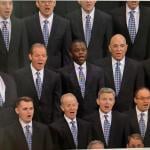
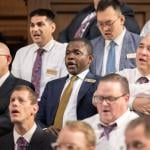
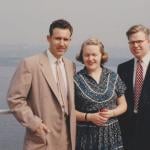
Choir members are not paid, but they are funded for national and international tours. They retire at age 60–or after twenty years in the choir, whichever comes first. Myrene Nixon (1928-2000) said this about “pay day.”
“I’d like to set the record straight. ‘Pay day’ was always the general conferences. The thrill of being a part of that great undertaking can never be adequately described.” Her account of the choir’s activities is here.
My aunt Carolyn Rachel Blair Shumway was also a member of the choir, and best friend of Myrene Nixon.
Both were from Santa Barbara, California, and both were gifted musicians, often playing leads in musicals. Every Sunday morning, our family would either watch or listen to “Music and the Spoken Word” from Temple Square in Salt Lake City. In my Indiana childhood, we listened to it on the radio, but later watched it on the television–always prepared for an “Aunt Carolyn” or a “Myrene Nixon” sighting. I became well acquainted with the voice of Richard L. Evans, who gave the spoken word for forty years–from the time the choir was conceived as a musical ambassador (1929) until his death in 1971.
The next year, 1972, Spence Kinnard became the spokesperson. And Aunt Carolyn Rachel Blair Shumway passed away from a heart attack.
Members of the choir attended Carolyn’s funeral. Myrene Nixon performed “In My Father’s House are Many Mansions.” Carolyn’s husband, Gene, managed to control his tears until the final hymn from the choir: “God Be With You Till We Meet Again.” The entire bench shook with Gene’s sobs. This was the Tabernacle Choir send-off, and Carolyn had sung it for years.
For me, Carolyn’s death was the introduction to death itself. She was only forty-one years old. I, a teenager, had not realized how still a dead body is until I saw her in the coffin. I sobbed for days.
I have witnessed death many times since, of course–none more difficult than the deaths of my parents. We were given a sweet, musical gift when Dad’s life was coming to its close.
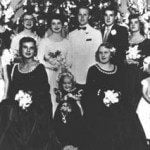
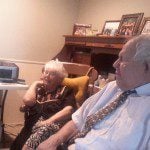
Mom and Dad loved Sibelius’ “Finlandia.” In their courtship years, Mom had called Dad on the phone–a brave thing for a young woman to do in 1954–because KSL Radio was going to broadcast the entire number. Dad’s suggested that they listen to it together.
Sixty-one years later, after eight children and more adventures than I’ll name here, Mom and Dad watched the choir perform “Finlandia” again. I wrote this memory on February 7, 2015:
Two Sundays ago, God gave my parents a gift. Yes, I think it was God. I don’t know who chose the Tabernacle Choir’s songs for that day, but someone was inspired to give my parents the gift of Finlandia. My sister invited our parents to watch “Music and the Spoken Word.” When Finlandia began, Mom said, “They never do the whole thing.” But they did. All of Finlanda. Mom wept.
On February 19th, 2016, two weeks after that broadcast, Dad died.
On September 21, 2020, Mom was dying. She wanted to watch a particular news station, which was irreverent, insulting, and inappropriate to accompany something as sacred as death.
I turned it off and put on the Tabernacle Choir. “Love Divine, All Loves Excelling.”
Love divine, all loves excelling,
Joy of Heav’n to earth come down;
Fix in us thy humble dwelling;
All thy faithful mercies crown!
Jesus, Thou art all compassion,
Pure unbounded love Thou art;
Visit us with Thy salvation,
Enter every trembling heart.I was unmoored after Mom’s passing–anxious, fuzzy-brained, confused. I needed music to calm me, and so created a playlist of hymns by the Mormon Tabernacle Choir. I walked myself through the Light of the World statuary at Thanksgiving Point, listening to songs my spirit loved: “How Firm a Foundation,” “Come Thou Font of Every Blessing,” and “Redeemer of Israel.” I was surrounded by yellow mums and orange dahlias
By the end of my walk, I was calm. The music’s effect was lasting, so I started listening to the choir every morning.
What is it about music that calms and heals us, and invites us into a larger world? Kaila Fox Lifferth, musician and teacher, says, “Every person is musical. It’s our birthright. Humans are musical beings.” There’s something especially glorious about the blend of many voices. We hear unity, community, cooperation, beauty. A blessing for the world.
“Other than the Book of Mormon,” says long-time choir member Lois Johnson, “the choir is the church’s best missionary tool.”


